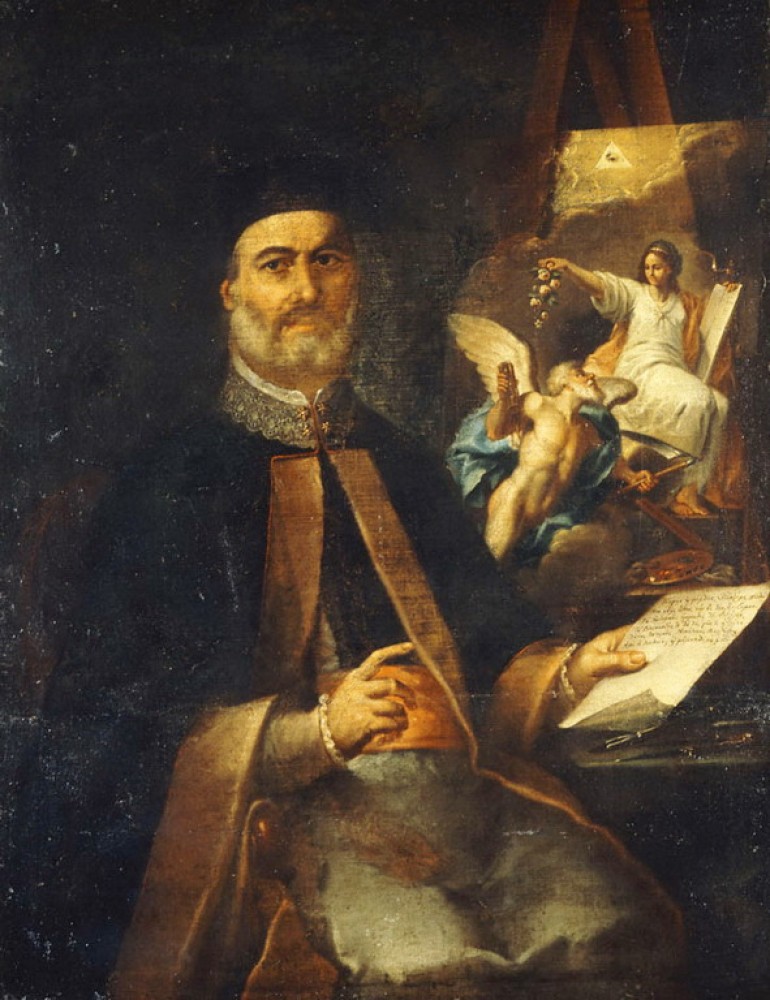
Nikolaos Georgiou Koutouzis (1741-1813) was a priest, painter and satirical poet. He was the son of George the merchant-sailor and Maria N. Maroudis or Maroulis. A difficult and uncompromising character, Koutouzis quickly stirred up animosity against him, one of which cost him, a wound to the face. Proud by nature and finding no other way to cover his shame, he grew a beard and became a priest. After these events, according to his biographers, he left for Venice and studied at the workshop of Tiepolo, where he systematically studied the works of the great masters of the Renaissance. His idiosyncratic character and critical spirit were expressed through the satire he developed, both in his poetry and in his realistic portraits. He returned to Zakynthos, where his free way of life and his performance in satire created various scandals, while as a painter he emerged as the most important figure of the Ionian islands of his time.
How important a figure Koutouzis was for his time, is shown by the fact that Dionysios Solomos highlights him as a hero, since his shadow, now dead, comes to stir the waters of Zakynthian society, just as he did with his satirical speech in life. In his poem 'On the Death of Ioannis Martinegos' (better known as 'Dream') written in 1826, the personal enmity that developed between Ioannis Martinegos and Koutouzis, which cost the latter at least a scar on his neck, is presented. In the Museum of Zakynthos there is a room dedicated to N. Koutouzis and N. Kantounis.
For Koutouzis the portrait
- is not a faithful depiction of external characteristics but a psychological analysis of the person he sees.
- His interpretation is often determined by personal predisposition and is not always impartial. Nothing in him is left unsaid. Just as in the written word he relentlessly censures a society that moves in abuses and arbitrariness, so his portraits poignantly depict the insipidness of that same society, show us its faults nakedly, and sarcastically emphasize its weaknesses.
- He works with a confident, nervous touch
- He draws the contours with voluptuous persistence
- He avoids the soft delicate passages
- He sharply accentuates the contrasts between the dark and light parts of the face, often imparting a certain stiffness and harshness to his work.
- The backgrounds are almost always monochrome
